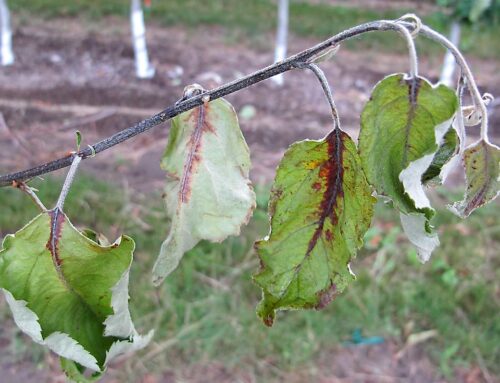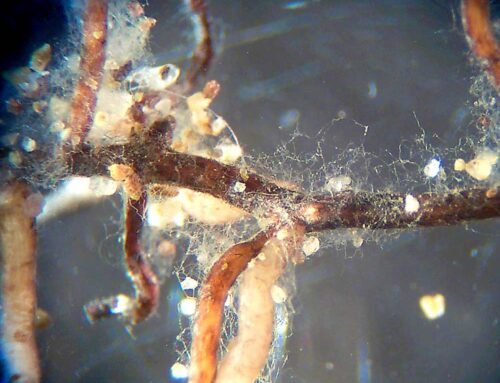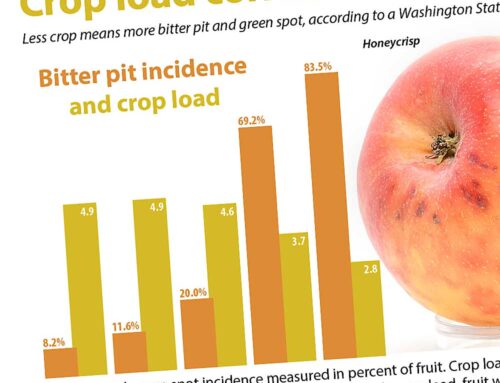Grapevine trunk diseases are a major threat to the economic viability of grapes worldwide. It’s no coincidence trunk diseases are on the rise at the same time as grape acreage is expanding, says a Canadian plant pathologist.
Trunk diseases have gained such importance globally that an international scientific council now holds a workshop on trunk diseases every two years, said Dr. José Ramón Úrbez-Torres, federal scientist for Canada’s Pacific Agri-Food Research Centre in Summerland, British Columbia.
At the last conference held in Spain in 2012, scientists from more than 20 countries participated, including Úrbez-Torres.
Trunk diseases are costly to control and significantly shorten the lifespan of a vineyard. It’s been estimated that California growers spend $260 million annually to control trunk diseases.
More than 60 pathogens are capable of causing grapevine trunk diseases, according to Úrbez-Torres, who received his doctorate in plant pathology at the University of California, Davis. Trunk diseases infect a wide range of crops, including apples, cherries, nuts, blueberries, apricots, olives, and more.
But for North American grape growers, five wood canker diseases cause the most problems: Eutypa dieback, Phomopsis dieback, Botryosphaeria dieback, Esca, and young vine decline complex.
In Washington State, Eutypa was a problem in Concord vineyards in the 1970s, but once large pruning cuts (made on wood 1.5 to 2 inches diameter) were avoided, disease problems lessened. In recent years, young vine decline and Eutypa have shown up only periodically in Washington vineyards.
Fungal pathogens infect vines through wounds and can cause wood canker symptoms years later. During rain or sprinkler irrigation, fungal spores are released from fruiting bodies (pycnidia and/or perithecia) found in areas of cankered wood embedded in the bark and enter wounds caused by pruning other injuries. Depending on the specific pathogen and age of the vineyard, there can be slow or rapid decline of vines.
Symptoms
In mature vineyards, symptoms of trunk diseases include overall stunting of shoots, and in subsequent seasons, death or dieback of shoots, spurs, arms, and cordons. In young vines, symptoms include poor growth or poor vigor, chlorosis of leaves, and black streaking of tissue observed when vines are cut (primarily at the base of the rootstock). Eventually, the vine dies due to canker formation in the vascular tissue.
Trunk diseases can be latent in grapevines for several years, often not showing up until the vineyard is seven to ten years old. Growers often follow paint or spray pruning wounds with fungicides, but such practices are usually started when symptoms are noticed, by which time the disease has already gained a foothold in the vineyard.
Fungal spores can travel by winds and enter vineyards from nearby tree fruit and nut orchards infected with disease. Researchers in California and Australia found Eutypa ascospores were blown by wind, traveling up to 100 miles away from the source.
“The truth is, trunk diseases are a major problem in grapes because there’s no chemical treatment to cure infected vines,” said Úrbez-Torres, adding that there are only prevention treatments available.
Once symptoms are observed, the only treatment to contain the disease is to remove the infected arm, cutting about four inches below the canker, and retrain the vine.
“You may do everything you should be doing to prevent disease, but if you’re next to apples, blueberries, cherries, apricots, almonds, and many other crops, you can get the pathogen just from being there,” said Úrbez-Torres.
Like a perfect storm, several factors came together in the last decade to heighten the problem of trunk diseases. Úrbez-Torres attributes the rise in disease incidence to a shortage of good quality planting material, high-density plantings, use of susceptible rootstock and cultivars, and loss of effective chemical controls.
In British Columbia, vineyards in the rapidly expanding grape industry began experiencing significant yield loss and plant losses in the late 2000s, he said. “Canker diseases are common there in older vineyards, but in recent years, young vine decline has been the most prevalent.” He believes part of the problem is infected plant material coming from nurseries.
“We don’t have a clean plant program in Canada,” said Úrbez-Torres, noting that most of their wine grape plant material comes from outside Canada. “The B.C. wine industry needs a fast, efficient diagnostic tool to detect pathogens and know if plant material is good to use,” he said.
Úrbez-Torres and his colleague at the research centre, Dr. Dan O’Gorman, have developed a DNA-based technology that can diagnose more than 60 grapevine trunk disease fungal pathogens within 48 hours.
When there was such a high demand for material in California in the 1990s due to replanting of AXR-1 rootstock, some nurseries didn’t cull inferior plant material and sold infected stock, says Dr. Kendra Baumgartner, plant pathologist for the U.S. Department of Agriculture in Davis, California.
Many young California vineyards showed symptoms of poor graft take, stunting, weak growth throughout the vineyard, and mortality, which were determined to be caused by a species of the Esca pathogen.
“There are a whole group of pathogens, including the trunk diseases Esca and Botryosphaeria dieback, found on nursery stock that are not part of certification programs,” she said.
Reasons for nonregulation include the lack of reliable detection tools that can be used by nurseries and the ease with which trunk diseases move into the nursery from neighboring vineyards and other crops. Baumgartner has been leading a team of researchers to develop early-detection tools for sampling healthy-looking leaves in the early stage of infection.
The team is also testing spore traps in the vineyards—similar to those used to monitor powdery mildew spores—to measure disease risk, learn when to begin preventive practices, and improve timing of such practices.
The research project, funded by a grant from the U.S. Department of Agriculture’s Specialty Crop Research Initiative, also aims to identify germplasm for resistance and develop more effective preventive practices.
Baumgartner and Úrbez-Torres spoke during a session on grapevine trunk diseases at the annual meeting of the Washington Association of Wine Grape Growers. •






Leave A Comment